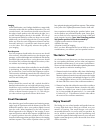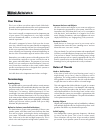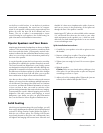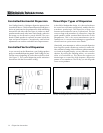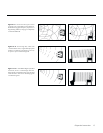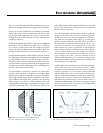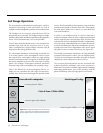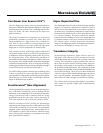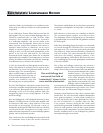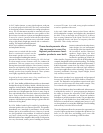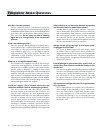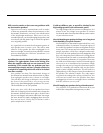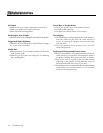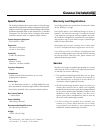
ESL
PanelCritical Zone: 250Hz–20kHz
The most significant advantage of MartinLogan’s exclusive
transducer technology reveals itself when you look at
examples of other loudspeaker products on the market today.
The Prodigy uses no crossover networks above 250 Hz
because they are not needed. The Prodigy consists of a single,
seamless electrostatic membrane reproducing all frequencies
above 250 Hz simultaneously. How is this possible?
First we must understand that music is not composed of
separate high, mid and low frequency pieces. In fact,
music is comprised of a single complex waveform with all
frequencies interacting simultaneously.
The electrostatic transducer of the Prodigy essentially acts
as an exact opposite of the microphones used to record
the original event. A microphone, which is a single working
element, transforms acoustic energy into an electrical signal
that can be amplified or preserved by some type of storage
media. The Prodigy’s electrostatic transducer transforms
electrical energy from your amplifier into acoustical energy.
Due to the limitations of electromagnetic drivers, no
single unit can reproduce the full range of frequencies.
Instead, these drivers must be designed to operate within
narrow, fixed bandwidth of the frequency range, and then
combined electrically so that the sum of the parts equals
the total signal. While nice in theory, we must deal with
real-world conditions.
In order to use multiple drivers, a crossover network is
enlisted to attempt a division of the complex musical signal
into the separate pieces (usually highs, mids, and lows) that
each specific driver was designed to handle. Unfortunately,
due to the phase relationships that occur within all crossover
networks and during the acoustical recombination process,
nonlinearities and severe degradation of the music signal
take place in the ear’s most critical zone (See Figure 16).
The Prodigy’s electrostatic transducer can single-handedly
reproduce all frequencies above 250 Hz simultaneously.
You have in one transducer the ability to handle in elegant
simplicity the critical frequencies above 250 Hz.
The crossover phase aberrations that are associated with
traditional tweeter, midrange, and woofer systems are
eliminated. The result is a dramatic improvement in imaging
and staging performance, due to the minutely accurate
phase relationship of the full-range panel wave launch.
Tweeter
Midrange
Woofer
Conventional Loudspeaker MartinLogan Prodigy
Figure 16. This diagram illustrates how a conventional
speaker system must use multiple crossover networks
that have negative effects on the musical performance.
Full Range Operation
crossover point (2–5kHz)
crossover point (250Hz)
crossover point (100–400Hz)
Woofer
18 Electrostatic Advantages




